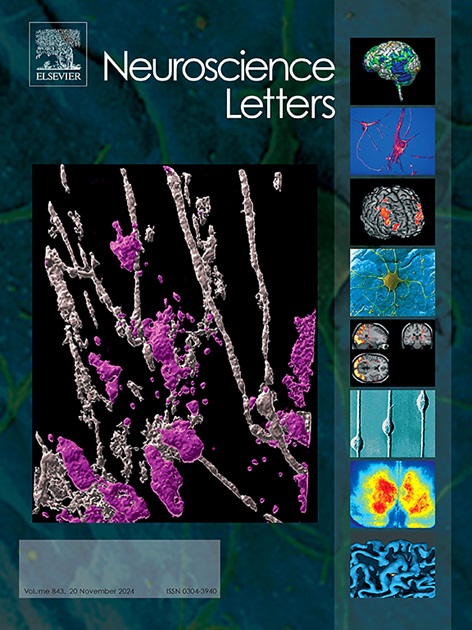丝素a相互作用蛋白(FILIP)的缺失导致握力弱和对伤害性刺激的异常反应。
IF 2.5
4区 医学
Q3 NEUROSCIENCES
引用次数: 0
摘要
丝蛋白a相互作用蛋白(Filamin a - interaction protein,小鼠中的FILIP,人类中的FILIP1)首先被确定为一种负性控制啮齿动物神经元迁移的蛋白,随后被证明对新皮层的发育至关重要。在之前的研究中,我们培育了FILIP敲除小鼠来研究FILIP在皮层发育中的体内功能。由于FILIP mRNA在体内广泛表达,我们系统地检测了敲除FILIP的小鼠,以确定FILIP在全身的功能。我们的结果显示,filip基因敲除小鼠表现出握力弱和感觉异常。有趣的是,我们还发现FILIP在背根神经节(DRG)的一个神经元亚群中表达。最近的研究报道,FILIP1突变导致严重的神经和肌肉骨骼异常,从而提出了一种新的疾病实体,称为FILIP1病。期望我们的filip基因敲除小鼠可以作为filip1病变病理研究的模型。本文章由计算机程序翻译,如有差异,请以英文原文为准。
Deletion of filamin A-interacting protein (FILIP) results in a weak grip strength and abnormal responses to nociceptive stimulation
Filamin A-interacting protein (FILIP in mice, FILIP1 in humans) was first identified as a protein that negatively controls neuronal migration in rodents, and was subsequently demonstrated to be pivotal for the development of the neocortex. In the previous study, we generated FILIP knockout mice to investigate the in vivo functions of FILIP in cortical development. Since FILIP mRNA is widely expressed in the body, we systematically examined FILIP-knockout mice to determine the functions of FILIP throughout the body. Our results showed that FILIP-knockout mice exhibited weak grip strength and sensory abnormalities. Interestingly, we also found that FILIP was expressed in a subset of neurons in the dorsal root ganglion (DRG). Recent research has reported that FILIP1 mutations lead to severe neurological and musculoskeletal abnormalities, resulting in the proposal of a new disease entity, termed FILIP1opathy. It is expected that our FILIP-knockout mice could be used as a model for the pathological investigation of FILIP1opathy.
求助全文
通过发布文献求助,成功后即可免费获取论文全文。
去求助
来源期刊

Neuroscience Letters
医学-神经科学
CiteScore
5.20
自引率
0.00%
发文量
408
审稿时长
50 days
期刊介绍:
Neuroscience Letters is devoted to the rapid publication of short, high-quality papers of interest to the broad community of neuroscientists. Only papers which will make a significant addition to the literature in the field will be published. Papers in all areas of neuroscience - molecular, cellular, developmental, systems, behavioral and cognitive, as well as computational - will be considered for publication. Submission of laboratory investigations that shed light on disease mechanisms is encouraged. Special Issues, edited by Guest Editors to cover new and rapidly-moving areas, will include invited mini-reviews. Occasional mini-reviews in especially timely areas will be considered for publication, without invitation, outside of Special Issues; these un-solicited mini-reviews can be submitted without invitation but must be of very high quality. Clinical studies will also be published if they provide new information about organization or actions of the nervous system, or provide new insights into the neurobiology of disease. NSL does not publish case reports.
 求助内容:
求助内容: 应助结果提醒方式:
应助结果提醒方式:


